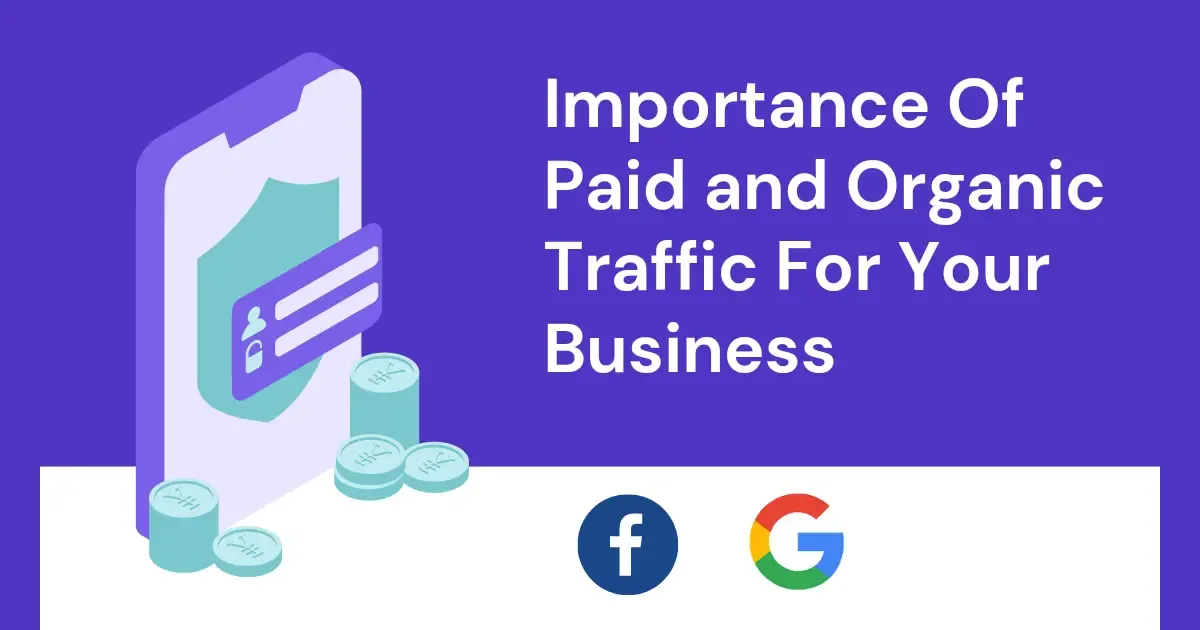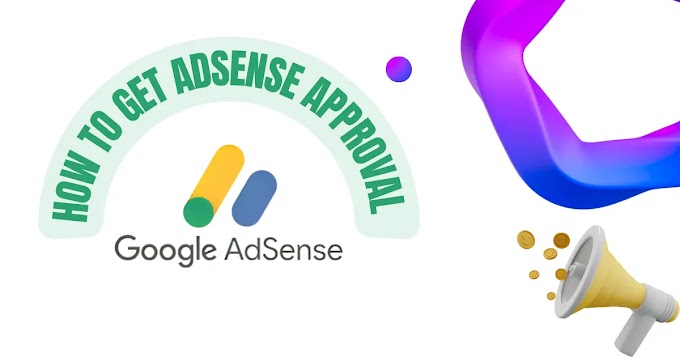Organic Traffic Vs Paid Traffic
Just as the flow of people is important for a physical store in the real world, the movement of people on the Internet is essential for any business to remain healthy and profitable!
The difference is that in the digital environment you can reach hundreds of thousands of people in just a few hours.
The most accurate and consistent way to direct people to your brand's store or website is through a perfect pair; paid and organic traffic!
At first glance, these elements may seem opposite, but you will see in this guide that there are no polarized maxims in Digital Marketing: all strategies aim to make you sell a lot more!
All my practical experience creating successful strategies with my team for Orgânica is here — and you will learn:
What is paid traffic;
What is organic traffic;
How to increase your traffic;
What is traffic?
Many people like to talk about traffic by comparing it to highways in traffic, round-trip lanes on which people travel to get somewhere.
I prefer you to think about traffic in a different way!
Imagine, that the Internet is a huge square of infinite size, containing absolutely every type of store that anyone could need.
People are not simply moving from one point to another; they don't always have a specific destination in mind! They simply walk around the square looking for:
• Answers to questions
• Means of satisfying desires
• Or ways to kill boredom when they have nothing else to do.
Every day, more than 5 billion people from all over the world walk back and forth in this infinite square!
This indicates that over 65% of the world's population spends most of their day searching for something to do in this virtual environment full of variety, rather than seeking recreation in the real world
With so many people looking for an answer (or an idea, a service, or product) that your business can offer — and with so many undecided people waiting for you to suggest to them what to do — it's to be expected that you'll need to come up with an effective way of directing these people’s attention to your space!
That's where the traffic management methodology in Digital Marketing comes in — a way to:
• Attract people interested in what you have to offer (or with the potential to be interested in your offers);
• Capture those who seem most open to becoming paying customers of your services or products;
• And convert those people into loyal fans (and frequent buyers)!
With so many people traveling on the Internet, there is no point in attracting just anyone's attention.
What's the point in getting the attention of a lower-middle-class person living in Russia when your product is a luxury gastronomic experience in a restaurant in India?
That person may be interested in what you have to offer, but that doesn't mean they'll be qualified to buy from you.
To separate the wheat from the chaff among these billions of visitors scrolling through the virtual world, traffic management in Digital Marketing plays the role of attracting those who can really become customers in the end.
Visitors who are attracted and have the highest chances of becoming potential customers are called leads.
That's why qualified leads, to be converted into customers, make up the most critical metric for the success of your advertising campaign or Internet authority: your conversion rate!
What is paid traffic?
Paid traffic can be earned by using third-party channels to promote your brand's content as long as you pay for them.
It's the famous paid media in Digital Marketing — and that's why we call the traffic that comes from them 'paid traffic'.
As in the example in the previous section, it would be like putting a giant sign in another company's space on the Internet square to draw attention to your business!
Some examples of these channels are:
• Google Ads
• Instagram Ads
• Meta Ads (formerly Facebook Ads)
• LinkedIn Ads
• Twitter Ads
• Websites and blogs (native advertising, banners).
In them, there is the possibility of segmenting your target audience, which will receive the content based on demographic and social data (information such as the location, gender, or age of your audience).
It's the fastest way to get results because you appear exactly in the most popular places where your ideal client already travels!
Paid Traffic Strategy
Paid traffic is a potent ally to enhance your Internet sales strategy as it targets the precise audience actively seeking the solutions your company offers!
This is why a crucial factor in the success of a paid traffic strategy is the proper segmentation of your ideal audience into ad groups.
Segmentation is the separation of specific groups — with similar behaviors, interests, brand awareness, and demographics — within your generalized target audience.
Through ad groups, which will only be displayed for the targeted groups that you deem relevant, you can take:
• Specific products;
• Special service conditions;
• And even exclusive promotions or discounts!
Segmentation helps to make the most of the investment made in Digital Marketing campaigns and is essential for monitoring the results of the strategies in detail — precious information that can be reused in future campaigns!
All of this is done with a focus on reducing your cost per conversion and increasing your ROAS (Return on Advertising Investment), which I will explain further in a moment.
Is there anything better than making more profit while paying less?
1. Identifying segmentations
The first step to creating successful strategies is identifying your segmentations!
To separate your ideal audience into groups with similar interests, behaviors, and purchasing potential, you must start by identifying the keywords that your leads use to find the answers or solutions that your company offers.
After listing some keywords, you will need to use tools to compare the search volume for these words.
Search volume (the number of times keywords are searched on the Internet) can act as a clue about the market potential that your Paid Media could capture!
Some questions can help you identify the best keywords for your strategy, such as:
• What are the most competitive products or services in my portfolio?
• Which offer the best payment methods for customers?
• Which are exclusive or offer special conditions?
• And which ones give the best profit margin for my business?
The first three questions help identify the products with the greatest potential to gain customer attention among other advertisements.
A product with a good profit margin helps to improve the cost and return ratio of your advertising campaigns.
Such a return is especially important at the beginning of your Digital Marketing strategy with paid traffic!
Just remember that when any company is entering the world of paid traffic, what they have are return estimates.
As soon as you get your hands on this data, don't delay in applying the necessary corrections and improvements.
2. Structuring your AD
When it comes to paid traffic, just showing a product is not enough; it must offer advantages over its competitors!
On a channel like Google Shopping, comparing different e-commerces is crucial. The customer sees several options (side by side) for purchasing the same product and will certainly be attracted by the lowest price!
Even with Google Ads, search shows potential customers a variety of similar ads and organic results — and most of these potential leads will just click on the links that catch their attention.
For your ad to be successful, it is essential to specify special conditions for:
• Prices
• Payments
• Or deliveries
Ads on social networks have greater space to talk about the characteristics of a product, allowing for more elaborate and descriptive content — a strategy that usually offers better results when it comes to direct conversions!
It is also crucial to have well-produced photos and videos, as this will be the first contact the customer will have with your offer!
Channels such as Google Shopping and Google Ads are most used to establish authority and expand the brand.
How to maximize ROAS
Return on Advertising Spend (ROAS) - this metric is a great indicator of the health of your ads!
Through ROAS, you can have a clear idea of how much you are profiting from Paid Media in relation to how much you are spending to serve them.
Almost always (but not in all cases), the higher the ROAS, the greater the amount of money your advertisements will be bringing to your business!
Some ways to increase this number involve:
• Run campaigns on the platforms where your ideal audience spends most of their time;
• Pay attention to the relevance and content of the ads (in the title, description, Call to Action, images, and videos);
• Carry out A/B tests to choose the best versions of your offers;
• And monitor your campaigns periodically to avoid unnecessary expenses, fix errors before they become problems, and optimize campaigns with the lowest (or highest) performance.
Remember to interpret ROAS in context with your current strategy, as there is no general average return for all companies, types of campaigns, platforms, nor specific types of media!
The more relevant and persuasive your CTA (Call To Action) is, the more likely you are to make people click on your offers—whether paid or organic!
What is organic traffic?
Organic traffic is obtained through your own channels, created to share content and encourage spontaneous (and free) interactions between your target audience and your company!
Examples of owned channels include:
• Your website;
• A blog on your website;
• Or your social media profiles.
In them, interactions can be defined as:
• Access to your pages;
• The number of likes on your content;
• The share count of your posts;
• Your viewing figures;
• And your conversions (when someone clicks on an offer or decides to register as a lead instead of just a visitor).
Unlike paid traffic, organic traffic results happen in the long term, and they are much longer-lasting!
How to start an organic traffic strategy?
Strategies aimed at obtaining organic traffic are the heart of success stories in Digital Marketing because they are great choices for the medium and long term!
Actions such as producing relevant content for your audience do much more than attract traffic to your website or online store — they also:
• Generate value;
• Establish trust;
• And increase your brand’s authority!
This is an effective way to show that your company knows what it is talking about, in addition to creating a more open relationship with your audience.
But just publishing content is not enough!
There needs to be a lot of planning to ensure that the material is original and of high quality in an effective strategy — truly capable of attracting organic traffic that converts into sales!
Start by understanding what type of content your audience consumes and how this material reaches them.
Then, build your planning based on that!
Identifying the main product lines
To plan a content strategy and attract organic traffic to your website, first identify the most important uses of your main product lines!
Groupings can be made based on:
• The uses of the products;
• Their characteristics;
• And the segmentations of your audience.
Choosing the best keywords
The next step is to choose the best keywords to work. You can use several tools in this process, with emphasis on:
• Semrush, to identify the volume of searches for keywords;
• Google Trends, which helps you find search trends and patterns;
• RD Station, which has the lead tracking function (monitoring potential consumers), something very important in audience segmentation.
The goal here is to create a solid foundation of content from keywords with low competition.
A good tactic is to create around 70% of the content on low competition keywords — the long tails!
The remaining 30% of the content is created around the most competitive keywords, for which you gradually increase the proportion of use over the following months.
There's no mystery!
Tips for increasing organic traffic
You can (and should) abuse four main elements to increase your organic traffic through Digital Marketing:
• The application of SEO, aiming to improve the position of your page in search results through keywords and other content improvement techniques;
• Building Backlinks, which are links from one content to another — inside or outside your website (and even better when other companies and people direct links from their websites to yours);
• Content Marketing techniques, which is the methodology that applies Marketing directly to the body of content to make it irresistible and easy to find on the Internet;
• And good social media practices, in which you need to choose the best platforms to create content and invest your business resources to reap the best results!
Organic traffic vs Paid traffic
If organic traffic really is this goldmine, then what is paid traffic for?
I can imagine this question is popped into your head at some point in this text — and the answer is simple!
Both organic and paid traffic have their own role in a balanced (and successful) Digital Marketing strategy:
Organic traffic brings a huge and continuous volume of people to your page, but it takes months or years to gain traction and requires constant work to create and publish relevant content.
When using Paid Media to generate paid traffic, you exchange money for immediate advertising, shown exclusively to the audience that is most important to you, accelerating your number of clicks and boosting your brand's popularity.
These types of traffic are not antagonistic and both need to be included in your Internet Marketing planning!
While you produce and accumulate valuable content on your website or blog, you can inject specific values to promote them to people with profiles similar to those who follow your company on social networks, but who do not yet know your brand!
It is possible to survive on organic traffic alone, but as I said, it may take some time to gain a sufficient volume of converting visitors to buyers.
You can also live without spending a penny on paid traffic, but you will be dependent on the spontaneous searches of your potential customers, on appearing in the first organic results through SEO, and you will run the risk of search engine algorithms changing!
The ideal is:
Use organic traffic to bring new audiences 'spontaneously' (and for your audience to always have new content to consume, which increases your brand’s authority);
And distribute your new products, services, or popular content via paid traffic (with the aim not only of selling but of collecting information about possible ideal audiences that are still outside your organic reach).
With this data, you will be able to create optimized content to organically attract an audience that until now has only reached you as paid traffic!
Then you just have to plan, create new strategies, and repeat this pattern to reach larger audiences — and more willing to buy what your company offers!
Useful tools for traffic management:
• Google Analytics, to track visitor behavior on your website;
• Google Search Console, to analyze your company's ranking in Google search results;
• Semrush, to research keywords and search volumes for them;
• Google Trends, also to identify keywords and trends in Google searches;
• RD Station, to automate Digital Marketing campaigns and analyze detailed results from them;
• And HubSpot, which also offers several automation options with complete control and data on audience behavior!









